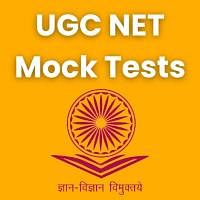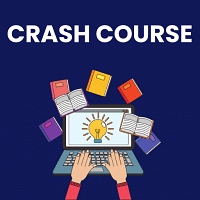UGC NET Exam > UGC NET Questions > The right of minorities that ensures the prot...
Start Learning for Free
The right of minorities that ensures the protection of their language, script and culture.
- a)The right to freedom of religion
- b)Right against exploitation
- c)Cultural and educational rights
- d)The right to freedom
Correct answer is option 'C'. Can you explain this answer?
| FREE This question is part of | Download PDF Attempt this Test |
Most Upvoted Answer
The right of minorities that ensures the protection of their language,...
The correct answer is Cultural and educational rights.
Key-Points
- Fundamental Rights guarantee basic rights to the citizens of India.
- In the original constitution, there were seven categories of fundamental rights in India.
- After the deletion of the Right to property by the 44th Amendment Act.
- The Constitution of India provides for six Fundamental Rights:
- Right to Equality.
- Right to Freedom.
- Right against Exploitation.
- Right to Freedom of Religion.
- Cultural and Educational Rights.
- Right to Constitutional Remedies.
- Article 29 of the Indian constitution protects the interests of the minorities by making a provision that any citizen/section of citizens having a distinct language, script, or culture have the right to conserve the same.
- Article 30 of the Indian constitution provides the right of minorities to establish and administer educational institutions.
Additional Information
- Article 25 to Article 28 of the Indian Constitution deals with the right to freedom of religion.
- Article 23 and Article 24 of the Indian Constitution deals with the right against exploitation.
- Article 19 and Article 22 of the Indian Constitution deals with the right to freedom.
Attention UGC NET Students!
To make sure you are not studying endlessly, EduRev has designed UGC NET study material, with Structured Courses, Videos, & Test Series. Plus get personalized analysis, doubt solving and improvement plans to achieve a great score in UGC NET.

|
Explore Courses for UGC NET exam
|

|
Similar UGC NET Doubts
The right of minorities that ensures the protection of their language, script and culture.a)The right to freedom of religionb)Right against exploitationc)Cultural and educational rightsd)The right to freedomCorrect answer is option 'C'. Can you explain this answer?
Question Description
The right of minorities that ensures the protection of their language, script and culture.a)The right to freedom of religionb)Right against exploitationc)Cultural and educational rightsd)The right to freedomCorrect answer is option 'C'. Can you explain this answer? for UGC NET 2024 is part of UGC NET preparation. The Question and answers have been prepared according to the UGC NET exam syllabus. Information about The right of minorities that ensures the protection of their language, script and culture.a)The right to freedom of religionb)Right against exploitationc)Cultural and educational rightsd)The right to freedomCorrect answer is option 'C'. Can you explain this answer? covers all topics & solutions for UGC NET 2024 Exam. Find important definitions, questions, meanings, examples, exercises and tests below for The right of minorities that ensures the protection of their language, script and culture.a)The right to freedom of religionb)Right against exploitationc)Cultural and educational rightsd)The right to freedomCorrect answer is option 'C'. Can you explain this answer?.
The right of minorities that ensures the protection of their language, script and culture.a)The right to freedom of religionb)Right against exploitationc)Cultural and educational rightsd)The right to freedomCorrect answer is option 'C'. Can you explain this answer? for UGC NET 2024 is part of UGC NET preparation. The Question and answers have been prepared according to the UGC NET exam syllabus. Information about The right of minorities that ensures the protection of their language, script and culture.a)The right to freedom of religionb)Right against exploitationc)Cultural and educational rightsd)The right to freedomCorrect answer is option 'C'. Can you explain this answer? covers all topics & solutions for UGC NET 2024 Exam. Find important definitions, questions, meanings, examples, exercises and tests below for The right of minorities that ensures the protection of their language, script and culture.a)The right to freedom of religionb)Right against exploitationc)Cultural and educational rightsd)The right to freedomCorrect answer is option 'C'. Can you explain this answer?.
Solutions for The right of minorities that ensures the protection of their language, script and culture.a)The right to freedom of religionb)Right against exploitationc)Cultural and educational rightsd)The right to freedomCorrect answer is option 'C'. Can you explain this answer? in English & in Hindi are available as part of our courses for UGC NET.
Download more important topics, notes, lectures and mock test series for UGC NET Exam by signing up for free.
Here you can find the meaning of The right of minorities that ensures the protection of their language, script and culture.a)The right to freedom of religionb)Right against exploitationc)Cultural and educational rightsd)The right to freedomCorrect answer is option 'C'. Can you explain this answer? defined & explained in the simplest way possible. Besides giving the explanation of
The right of minorities that ensures the protection of their language, script and culture.a)The right to freedom of religionb)Right against exploitationc)Cultural and educational rightsd)The right to freedomCorrect answer is option 'C'. Can you explain this answer?, a detailed solution for The right of minorities that ensures the protection of their language, script and culture.a)The right to freedom of religionb)Right against exploitationc)Cultural and educational rightsd)The right to freedomCorrect answer is option 'C'. Can you explain this answer? has been provided alongside types of The right of minorities that ensures the protection of their language, script and culture.a)The right to freedom of religionb)Right against exploitationc)Cultural and educational rightsd)The right to freedomCorrect answer is option 'C'. Can you explain this answer? theory, EduRev gives you an
ample number of questions to practice The right of minorities that ensures the protection of their language, script and culture.a)The right to freedom of religionb)Right against exploitationc)Cultural and educational rightsd)The right to freedomCorrect answer is option 'C'. Can you explain this answer? tests, examples and also practice UGC NET tests.

|
Explore Courses for UGC NET exam
|

|
Suggested Free Tests
Signup for Free!
Signup to see your scores go up within 7 days! Learn & Practice with 1000+ FREE Notes, Videos & Tests.
























